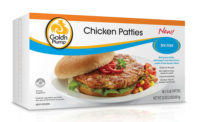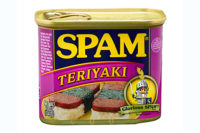Kicking Up The Flavor
By Lisa White
The continuing popularity of chicken wings has prompted processors to kick the flavors up a notch
Chicken wings have a long and colorful history in the United States. Deep-fried chicken wings, which had long been a staple food item of the South, made their debut in Yankee territory back in 1964. This is when the concept of cooking wings in peppery hot sauce was conceived at the Anchor Bar in Buffalo, NY.
It was here that bar co-owner Teresa Bellissimo cooked leftover wings in Frank’s® RedHot® Buffalo Wing sauce, produced by French’s Flavor Ingredients of Springfield, MO, as a late-night snack for her son and his friends. The boys reportedly liked them so much that the Bellissimos put the wings on the menu the next day. Served with celery slices and blue cheese sauce, “Buffalo Wings” soon became legendary.
After Dick Winger, who sold the hot sauce to the Anchor Bar, went on the road with Teresa’s son Dominic to promote the item and sell the sauce, Buffalo wings gradually caught on with restaurant operators around the country.
In addition, the concept eventually took off with fast-food chains in the 1990s, when McDonald’s began selling Mighty Wings at some of its restaurants, KFC rolled out Hot Wings, and Domino’s Pizza installed Buffalo wings as a permanent side item on its menu.
Flying onto Menus
Wings have gone on and off various fast-food menus since then, but they have become a staple of casual-dining establishments. In fact, it has been reported that virtually every casual-dining chain offers chicken wings as an appetizer or entrée. According to a recent article in The Birmingham News, chicken wings top the list at casual-dining restaurants, with 66 percent featuring wings on the menu. In 2004, 18 billion chicken wing segments were sold in American restaurants — about 60 wing pieces for every person in the United States.
Today, even more upscale restaurants around the country have offered their variation on traditional wings. Some examples include chicken wings with Maytag blue cheese dressing from Northeast chain Clyde’s, and famed New Orleans restaurant NOLA’s stuffed chicken wings with hoisin dipping sauce.
Among the top 200 restaurant chains, wings have been featured prominently on the menu in a number of variations over the years. At Columbus, OH-based Damon’s Grill, a chain of 100 restaurants, Kickin’ Chicken Wings provide a sweet chili glaze; while many of TGI Friday’s 891 restaurants in 54 countries have had continuing success with Jack Daniels Wings with smoky sweet Jack Daniels glaze. Even California Mexican restaurant chain El Torito Grill features Buffalo wings glazed with spicy Mexican chile sauce on its party platter menu.
Chicken wings even have become the theme for at least one growing restaurant chain. Buffalo Wild Wings Grill & Bar is one of the Top 10 Fastest-Growing Restaurant Chains in the country. The New York-style wing joint opened its first location in 1982 and now has 350 company-owned and franchised locations in 34 states. Each locale offers wings with a choice of 12 signature sauces, including those “easy on the palate,” such as Teriyaki and Smoky Southwestern; spicy selections, such as Thai and Caribbean Jerk; and “smokin’ sauces,” including those dubbed Wild and Blazin’.
Statistics on this segment further support chicken wings’ growing popularity. The Washington, DC-based National Chicken Council (NCC) estimates that in 2005, approximately 10.8 billion chicken wings (2.2 billion pounds) were marketed as wings as opposed to the wings on whole chicken or breast quarters. Of those, 7.2 billion wings (1.5 billion pounds) were sold through foodservice channels. Another 3.6 billion wings (700 million pounds) were sold in retail grocery stores.
The vast majority of wings, especially those destined for foodservice, are disjointed, with the third joint (the thin part known as the flapper) being exported to Asian countries and the meatier first and second joints being sold domestically. Therefore, the actual number of wing portions sold is considerably higher than 10.8 billion, reports the NCC.
Because chicken companies cannot produce wings without the rest of the chicken, the supply of wings is limited by the total number of chickens produced, the NCC reports. Consequently, when the demand for wings is stronger than the demand for other chicken parts, the price of wings goes up, which has been the case over the past several years, explains Jay Hall, president of Excalibur Seasonings, based in Pekin, IL.
Hall reports that the foodservice segment has taken the chicken market where it now costs $1.69 a pound for chicken wings, versus 39 cents a pound years ago. “This popularity upped the ante for this segment,” he says. Restaurants have taken away the home market for wings. It was a good side dish for consumers at home, but now restaurants are tying up supplies, which is driving up costs.” However, Hall says this is good news for the chicken processors and flavoring companies such as his.
Chicken wing prices usually peak in January around Super Bowl weekend, the biggest time of the year for wings. The NCC estimates that approximately 450 million cut wings, or more than 1 billion wing portions, will be consumed during Super Bowl weekend in 2006. This amounts to about 90 million pounds of wings.
Today’s Flavors
Chicken wing flavors have evolved beyond the popular Buffalo flavor, adapting to the changing and increasingly more sophisticated palates of consumers. According to Chef Jason Gronlund, director of culinary services and ingredient sales at McIlhenny Co., the Avery Island, LA-based maker of Tabasco, foodservice demand for hot wings is moving forward.
“Buffalo Wild Wings and other restaurants are pushing the envelope to bring new flavors to the table, which will eventually move into the retail sector,” he says.
On the ingredient side, Gronlund works hands-on with food manufacturers utilizing a wide array of TABASCO® brand Industrial Ingredients. Using the company’s dry, liquid or intermediate moisture varieties, he assists processors in spicing up items such as hot wings.
“Whether it’s in a company’s lab or from my office, I can recommend the right product for specific manufacturing capabilities,” he explains. “I can assist [in] steering companies in the right direction to make sure the flavor profile fits the needs of their food products and their consumers.”
That steering isn’t too difficult, as Gronlund tells it. Basically, consumers are tired of the same flavor profiles and seek something different, he adds.
“As a result, I’ve seen more sweet and savory wing sauces being used,” says Gronlund. “For example, Asian profiles with peanut sauce [are] really popular. We also are seeing more Latin flavors in this segment, with jalapeño and habanero pepper profiles. We do a cherry wing with green Tabasco sauce that has a jalapeño taste profile.”
He goes on to say that the company’s Garlic Tabasco sauce contains Cajun seasonings that provide visual appeal to chicken wings.
“Today, people want a more visual substance rather than just a glazed coating,” says Gronlund. “They also are looking to sauces and herbs for flavor and diversity.”
Recently, Gronlund created Cajun wings in Japan, taking the traditional Tabasco sauce, mixing it with honey and ginger and then coating it in crushed up shredded wheat, creating what he calls a “honey wheat wing.”
The company will be introducing a Sweet and Spicy Tabasco sauce in January that Gronlund says is an ideal compliment to chicken wings, because “it is sweet and sticky, but has a spice to it,” creating a more diverse flavor profile.
Gronlund sees an increasing number of consumers moving away from fried chicken wings.
“Grilled wings are becoming more popular, as are smoked wings,” he says. “Cooking affects the texture of the wings. Grilled wings don’t have the crunch of fried wings, but they are typically more tender. However, because traditional Buffalo wing sauce will burn on the grill, other barbecue sauces or bases are used with grilled wings.”
The average consumer is developing a more discerning palate, and therefore wants a product that incorporates a very complex flavor system, not just the sensation of heat, says Rhonda McRae, technical sales for French’s Flavor Ingredients.
“The trend is toward less intense heat and more in the direction of a balanced heat and fermented cayenne flavor,” she explains. “Our Frank’s RedHot Buffalo Wing sauce starts from seed selection and, upon maturation, undergoes a six-month aging process to bring out a fermented cayenne flavor.”
Hall agrees that wing flavors can be “all over the board.” As a result, flavor definitions are not necessarily consistent.
“Lemon garlic and ginger soy are self explanatory,” he adds. “But when wings are called ‘Mediterranean,’ what does that mean? Consumers tend to lean more toward recognizable flavors, such as Cajun, teriyaki and barbecue.”
Other up-and-coming wing flavors are sweet barbecue, garlic-based sauce with oregano and lemon garlic.
“For wings geared toward the Hispanic market, color is important. Bright orange is the preferred color for Buffalo wings,” says Hall. “And chile pepper, instead of black pepper, is more common in this segment.”
McRae says shifting demographics are driving the trend for Latin wing flavors, such as chili and lime.
“French’s responded to this trend by introducing Frank’s RedHot Chili ’n Lime sauce. It has a citrus and chili Southwestern flavor,” McRae explains.
Gronlund predicts the future of hot wings will incorporate more diverse flavors. Consumers also will be seeking more visually pleasing hot wings with seasonings adding eye appeal as well as sweet and spicy flavors mixed together.
“Consumers want more than just the Buffalo wing sauce,” he says. “In the years ahead, wings will feature more herb and Latin flavors.
“Our research has found that consumers want more than the traditional Buffalo wing sauce. We won’t get completely away from spicy wings, but there will be added sweetness to the flavoring to break it up.”
McRae predicts that the hot wing category will continue to see growth, as slight variations from the traditional hot wings will add allure.
“However, chicken wings will maintain a recognizable flavor that has found such a strong following,” she concludes. NP
Ingredient suppliers participating in this feature include:
Excalibur Seasonings, phone (800) 444-2169, e-mail sales@excaliburseasoning.com, or visit www.excaliburseasonings.com
French’s Ingredients, phone (800) 4FRENCH (437-3624), e-mail elyse.stufft@reckittbenckiser.com or visit www.frenchsflavoringredients.com.
Tabasco, phone 337-365-8173, e-mail whatscooking@tabasco.com or visit www.tabasco.com.



Report Abusive Comment